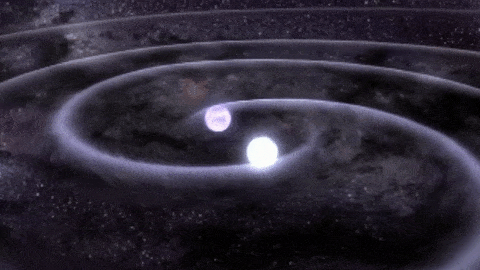
2017 Nobel Prize for Physics
Rainer Weiss, Barry C. Barish and Kip S. Thorne have won the 2017 Nobel Prize in Physics. The three American scientists are members of the LIGO-Virgo collaboration that discovered gravitational waves in 2015. The price was awarded “for decisive contributions to the LIGO detector and the observation of gravitational waves” , the committee said in a news release.
“This year’s prize is about a discovery that shook the world” said the Nobel committee representative Goran K. Hansson in Stockholm.
In 1915 Albert Einstein predicted that distortions in gravity would travel through space-time like ashock wave. This happens about a century after his prediction, confirming what he said about gravitational waves in the theory of relativity.
One half of the prize went to Weiss, who is a Physics professor at the Massachusetts Institute of Technology. The other half was split between Barish and Thorne. Both work at the California Institute of Thechnology.
What reaction did the scientists have when they got to their incredible discovery ?
“When we first discovered the gravitational waves in September 2015, we just couldn’t believe it” said Weiss. It took months for the scientists to convince themselves that the detectors found gravitational waves, he said.
After a period of astonishment, the scientists tried to give an explanation to what had just happened. They discovered that two black holes collided more than a billion light-years away, converting a mass equivalent to three suns into energy. When the mass of energy blew up, the twin LIGO detectors, in Livingston and Hanford caught the wave. The detectors registered the wave as a spike in frequency; a tone nicknamed “cosmic chirp” .
The Italian Virgo detector had an important role in the discovery. However, the Italian department announced their most recent cosmic distortion in September.
Between 2015 and 2017 the instruments to catch the gravitational waves enhanced. Now scientists are using a new generation of laser interferometers , which are ten times more sensitive than their predecessors.
Some of these Virgo interferometers have been installed at Cascina, near Pisa. They provide observations of the gravitational waves generated in the whole universe.
What cool things can we learn from gravitational wave astronomy?
SEEING FURTHER BACK INTO THE FUTURE: learn about what happened after the Big Bang and how the planets and the universe developed during the years
LEARNING HOW COMMON IT IS FOR BLACK HOLES TO ORBIT EACH OTHER
FINDING THE SOURCE OF DARK MATTER: Dark matter is theorized to make up 27% of all the matter in the universe. But we’ve never seen dark matter and we don’t know where it comes from. Perhaps gravitational waves can help us trace the origins of dark matter.
It could exist in the form of many tiny black holes. It could be the remnants of "primordial" black holes created at the beginning of the universe. We just don’t know.
It could exist in the form of many tiny black holes. It could be the remnants of "primordial" black holes created at the beginning of the universe. We just don’t know.
FINDING NEW, WEIRD CELESTIAL OBJECTS
This discovery may allow us to study the universe in a different way: it is as if we are able to listen to it, not only to see it.
FRANCESCO & NICOLO’
This discovery may allow us to study the universe in a different way: it is as if we are able to listen to it, not only to see it.
FRANCESCO & NICOLO’

What an interesting post, boys! Thanks for sharing it here with us.
ReplyDeletei've always said, albert einstein was a genius!!! -lorenzo m.-
ReplyDeleteInteresting theme guys! 👌🏻
ReplyDelete